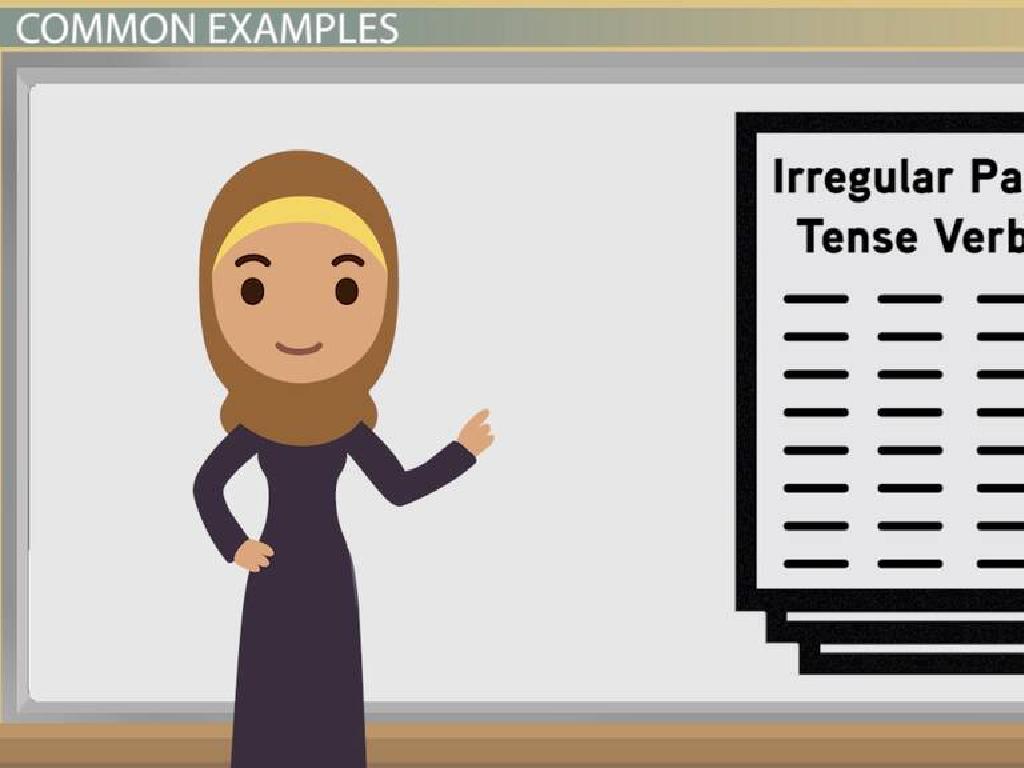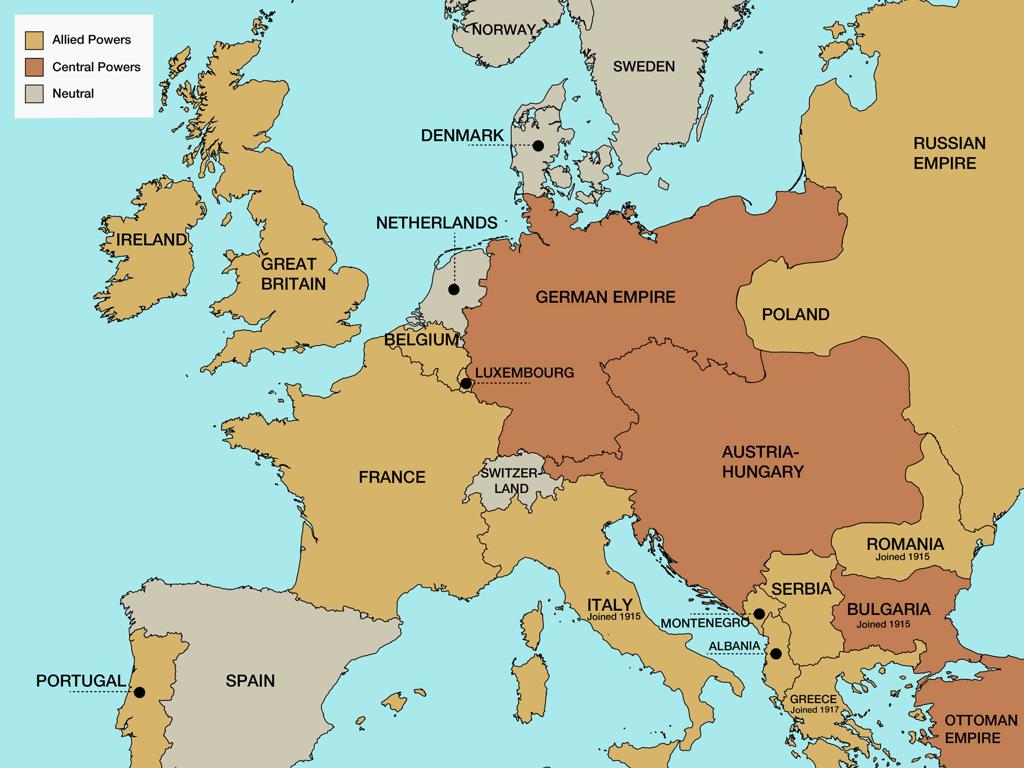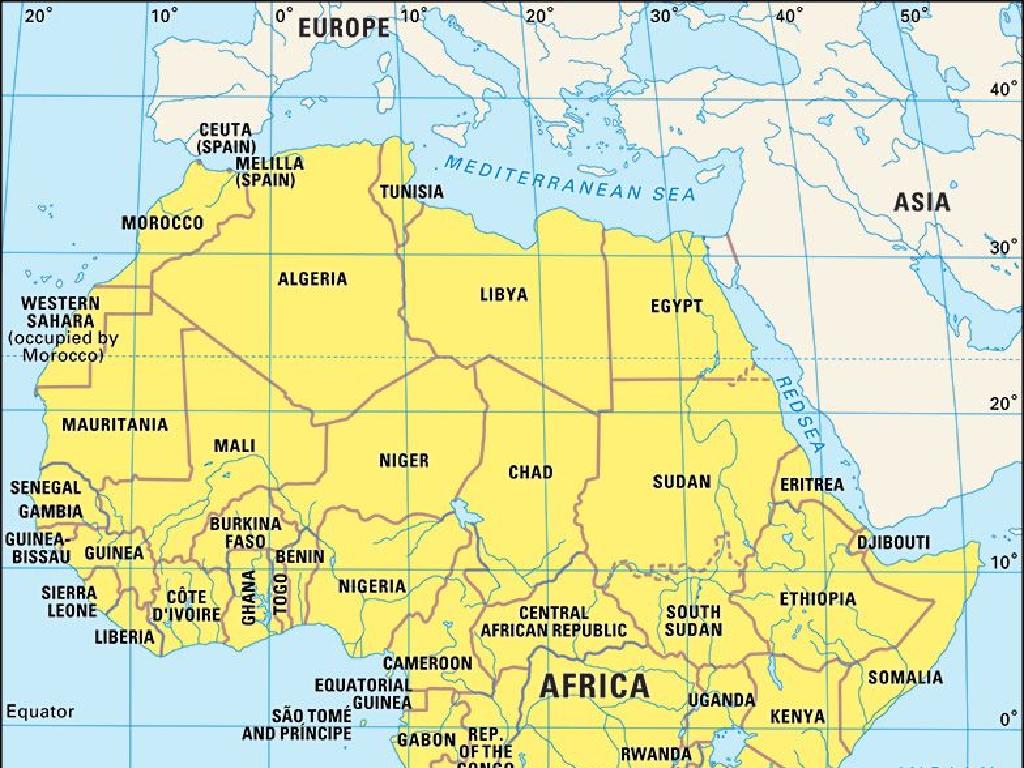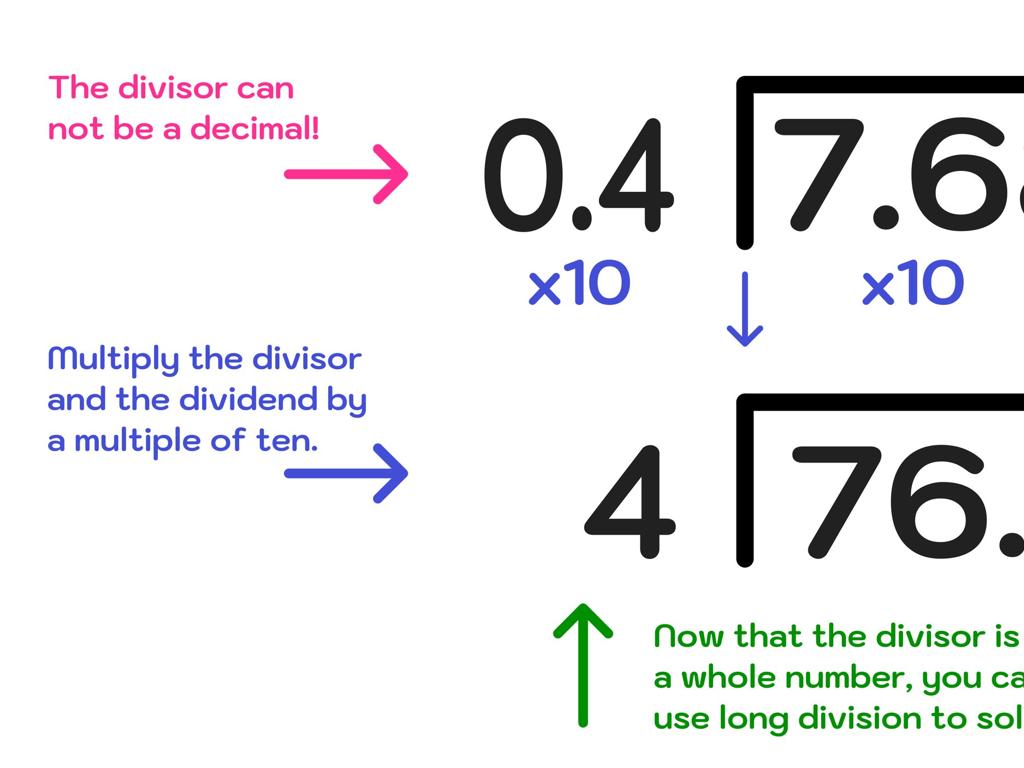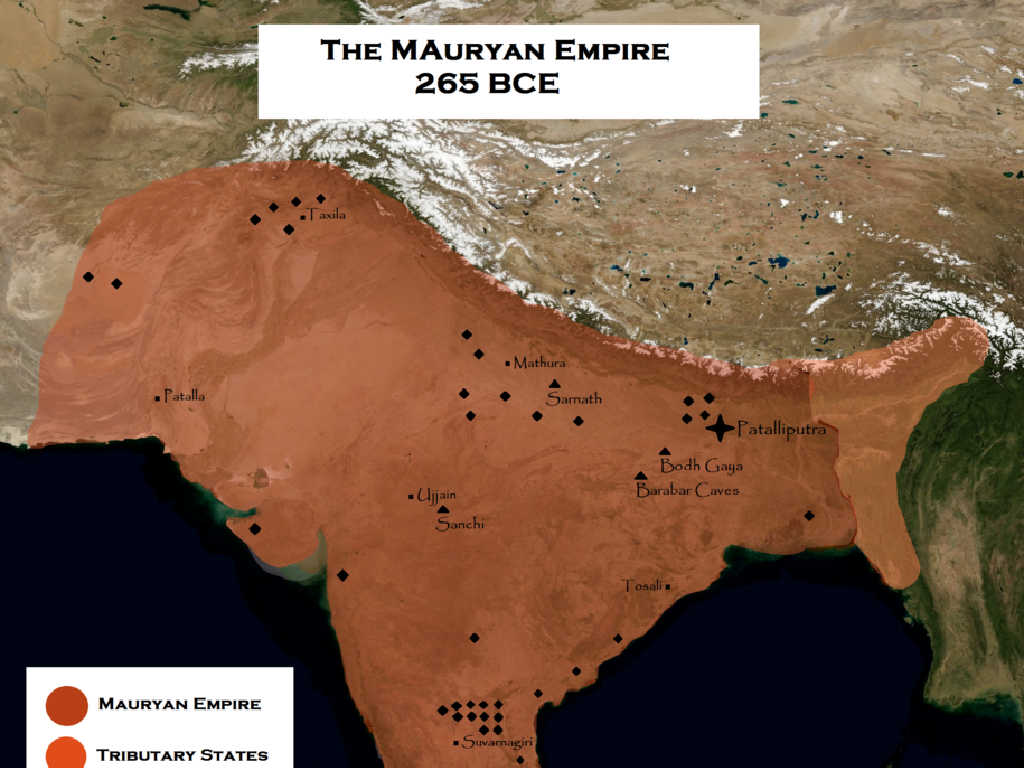Feudal Europe
Subject: Social studies
Grade: Seventh grade
Topic: Medieval Europe
Please LOG IN to download the presentation. Access is available to registered users only.
View More Content
Exploring Feudal Europe
– Medieval Europe backdrop
– A period marked by the fall of Rome and the rise of monarchies
– Feudalism defined
– A system where land was exchanged for service and protection
– Feudal Europe’s structure
– Kings, nobles, knights, and peasants all played specific roles
– Today’s lesson goals
|
This slide introduces students to the historical context of Medieval Europe, setting the stage for a deeper dive into the feudal system. Feudalism was the dominant social system, where the nobility held lands from the Crown in exchange for military service, and vassals were tenants of the nobles, while the peasants lived on their lord’s land and gave him homage, labor, and a share of the produce in exchange for military protection. The lesson will explore the intricacies of this hierarchy and how it shaped European society during the Middle Ages. Encourage students to think about how different life in Feudal Europe was compared to today, and what the benefits and drawbacks of such a system might have been.
Understanding Feudalism in Medieval Europe
– Define Feudalism
– A social system for organizing society around relationships derived from land ownership and service
– Roles: Kings to Serfs
– Kings: rulers, Lords: landowners, Knights: warriors, Serfs: laborers
– Feudalism’s impact on society
– Structured society and determined social status & responsibilities
– Feudal hierarchy and obligations
– Lords granted land for service, Knights pledged to defend, Serfs worked the land
|
Feudalism was the dominant social system in medieval Europe, where the nobility held lands from the Crown in exchange for military service, and vassals were tenants of the nobles, while the peasants lived on their lord’s land and gave him homage, labor, and a share of the produce in exchange for military protection. Discuss the hierarchical nature of feudal society and how it influenced the distribution of power, wealth, and social roles. Emphasize the interdependence between different social classes and how this system maintained order and structure during a time of frequent wars and instability. Provide examples of the duties and rights of each class to illustrate the complex network of relationships in feudal society.
Life in a Feudal Society
– Daily duties by class
– Lords managed lands, serfs worked the fields, artisans crafted goods
– Nobility vs. peasantry rights
– Nobles had power and land, serfs had protection but few freedoms
– Manorial system’s self-sufficiency
– Manors produced everything needed for life, limiting need for trade
– Feudalism’s impact on daily life
|
This slide aims to give students a clear understanding of the structure and daily life within a feudal society. Emphasize the hierarchical nature of feudalism, where each class had specific roles and responsibilities. Lords and knights protected the land and managed affairs, while serfs and peasants worked the land and provided food. Highlight the stark contrast in rights and privileges between the nobility, who enjoyed power and wealth, and the peasantry, who were bound to the land with limited freedoms. Discuss the self-sufficient manorial system, where manors functioned almost independently, producing their own food, clothing, and tools. This system minimized reliance on external trade and shaped the social and economic landscape of the time. Encourage students to consider how this system influenced the daily life and social interactions of people in medieval Europe.
The Feudal Contract: Bonds of Land and Loyalty
– Land exchanged for service
– Lords granted land called fiefs in return for military service
– Oaths of fealty and homage
– Fealty: loyalty to a lord; Homage: formal public acknowledgment of feudal allegiance
– Loyalty and duty in feudalism
– Loyalty and duty were central to maintaining order and structure in feudal society
– The societal impact of feudal bonds
– Feudal contracts shaped social classes and power dynamics in Medieval Europe
|
This slide introduces the concept of the feudal contract, a cornerstone of societal structure in Feudal Europe. Emphasize the reciprocal nature of the feudal system, where land was exchanged for military service and other duties. Highlight the significance of oaths of fealty and homage as not just formalities but essential pledges that bound lords and vassals in mutual obligation. Discuss how loyalty and duty were more than personal virtues; they were the glue that held the feudal hierarchy together. Finally, explore the broader societal implications of these feudal bonds, shaping the social classes and power dynamics of the time. Encourage students to consider how these contracts might influence the lives of different people within the feudal system.
Knighthood and Chivalry in Feudal Europe
– Steps to knighthood
– Page, squire, then knight; rigorous training involved
– Chivalry code
– Honor, courtesy, valor, and loyalty were key chivalry principles
– Tournaments role
– Tournaments were practice for war and a display of skills
– Knights and warfare
– Knights were crucial in battles, serving lords and kings
|
This slide introduces students to the concept of knighthood and chivalry during the medieval times in Europe. Discuss the long and challenging path a young man would take to become a knight, starting as a page and then a squire before finally being dubbed a knight. Emphasize the code of chivalry, which dictated a knight’s conduct, including bravery, respect, and protection of the weak. Explain how tournaments served as both training for warfare and a platform for knights to demonstrate their combat skills and earn prestige. Lastly, highlight the role of knights in warfare, their allegiance to their lords, and how they shaped the outcomes of battles. Encourage students to think about how these medieval concepts of honor and duty compare to modern values.
The Power of the Church in Feudal Europe
– Church’s central role in society
– The Church was a dominant force, guiding both spiritual and political matters.
– Monasteries as centers of learning
– Monasteries preserved knowledge and educated future leaders.
– Church’s influence on laws
– Canon law influenced secular law, guiding moral conduct.
– Daily life shaped by faith
– Religious festivals and church services structured everyday life.
|
In this slide, we explore the multifaceted influence of the Church during the feudal era. The Church was not just a religious institution but also a powerful political entity. Monasteries played a key role in the education system and were often the only places where knowledge was preserved during the Middle Ages. The Church’s canon law extended into secular realms, affecting the laws of the land and the daily activities of the populace. Students should understand how the Church’s teachings and regulations permeated all aspects of life, from the observance of holy days to the moral decisions made by individuals. Encourage students to consider how the Church’s power might compare to modern institutions and their influence on daily life.
The Decline of Feudalism
– Factors leading to feudalism’s fall
– Political changes, economic growth, and social shifts
– Emergence of towns and middle class
– Towns became economic hubs, giving rise to a wealthy, influential middle class
– Disease and war’s role in decline
– The Black Death and wars disrupted feudal society, reducing serfdom
– Renaissance influence on feudalism
– Renaissance ideas of humanism and individualism contrasted with feudalism
|
This slide explores the multifaceted reasons behind the decline of feudalism in Europe. Students should understand that the decline was not due to a single event but a combination of political, economic, and social changes. The growth of commerce led to the rise of towns and a new middle class that challenged the feudal hierarchy. Catastrophic events like the Black Death and the Hundred Years’ War weakened the nobility and led to a labor shortage, increasing the power of the lower classes. The Renaissance brought a new way of thinking that valued the individual over the rigid structure of feudal society. Encourage students to think about how these factors interplayed to bring about a significant transformation in European society.
Feudal Europe: A Recap
– Review of Feudalism’s key elements
– Hierarchical system with lords, vassals, and serfs
– Feudalism’s impact on Europe
– Shaped political, economic, and social structures
– Compare feudal and modern societies
– Contrast with today’s democratic and economic systems
– Understanding societal evolution
|
This slide aims to summarize the concept of Feudalism and its significance in European history. Begin with a quick review of the key elements of Feudalism, including the roles of lords, vassals, and serfs, and the exchange of land for service. Discuss how this system influenced the development of Europe’s political, economic, and social structures. Encourage students to think critically by comparing and contrasting feudal society with modern societal structures, highlighting the evolution from hierarchical to more democratic systems. This will help students understand the progression of societal organization and its relevance to contemporary life. Provide examples to illustrate the differences, such as the shift from land-based power to today’s emphasis on capital and individual rights.
Class Activity: Build Your Feudal Society
– Form groups for social classes
– Discuss roles within your group
– What would you do as a lord, knight, or peasant?
– List group responsibilities
– How do your roles support the society?
– Present your feudal society
|
This activity is designed to help students understand the hierarchical structure of feudal society in Medieval Europe by actively participating in a role-play. Divide the class into groups representing different classes such as lords, knights, and peasants. Each group should discuss the daily life, duties, and rights of their class. Encourage them to think about how each class relies on the others, reflecting the interdependent nature of feudalism. After discussion, each group will list their roles and responsibilities on paper. Finally, groups will present their version of a feudal society to the class, explaining the dynamics between the classes. Possible variations of the activity could include creating a feudal contract, designing a manor, or writing a day in the life of a person from their class.

